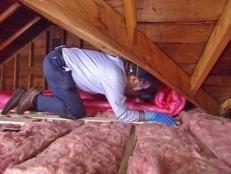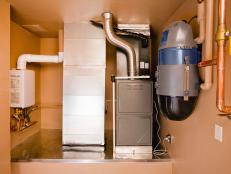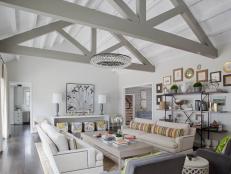Repel the Sun's Heat With Radiant Sheathing
When the flaming sun heats up roofing, that hot air transfers into the attic. To prevent this, radiant sheathing applied beneath roofing material will reflect heat away from the roof and keep the attic cooler.
Jeff Wilson used radiant sheathing while giving his 70-year-old home the ultimate green treatment: a Deep Energy Retrofit (DER) that involves everything from beefing up insulation to upgrading systems and installing solar panels.
The radiant sheathing was a small portion of his project, but critical for improving the energy efficiency of his home. "The difference between regular oriented strand board (OSB) sheathing and radiant barrier OSB is a thin reflective layer that is laid face down," explains Jeff, noting how the aluminum surface repels heat from the sun and roofing materials that soak in rays.
How Radiant Sheathing Works
Jeff compares the radiant barrier he used between the rafters and roofing of his home to the way an emergency blanket works — you know, those thin plastic covers that are shiny on one side.
"If you put that shiny side toward your body, you'll start to sweat immediately," Jeff describes. "The radiant heat your body puts out is reflected back to you."
The blanket is no thicker than a tarp, but because of its reflective surface, it keeps people in dire situations warm.
Radiant sheathing works the same way. When applied shiny side down as a foundation for the roofing material, the sheathing prevents heat generated by sunlight and roofing from entering the attic. The attic then maintains a more constant temperature. "That thin layer of aluminum keeps quite a bit of radiant heat from entering the attic," Jeff says.
Applying the Barrier
Layers of protection: Radiant sheathing takes the place of typical OSB, and it is applied in the same manner: on top of rafters and underneath roofing material.
Wall applications: In some extremely hot climates, radiant sheathing is applied to exterior walls. In this case, the shiny side should face out toward the siding, Jeff says.
Roof enhancements: Add a better heat buffer by choosing light-colored roofing material. Jeff opted for WeatherBond Pro Weld-Free TPO (thermoplastic polyoletin), a heavy-duty rubber roof that is white to reflect the sun and prevent heat from entering the attic.







































